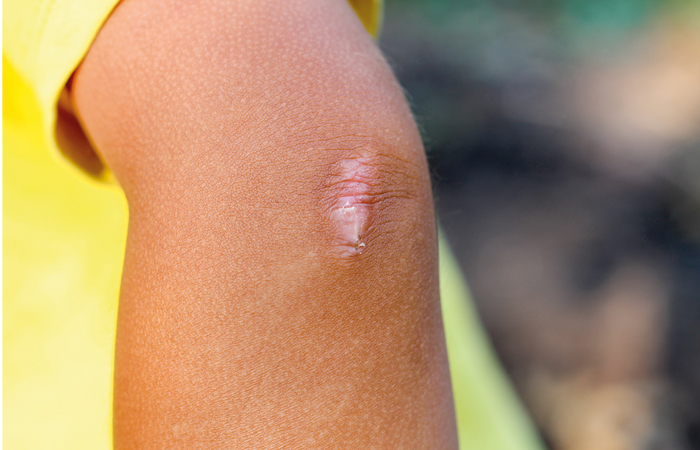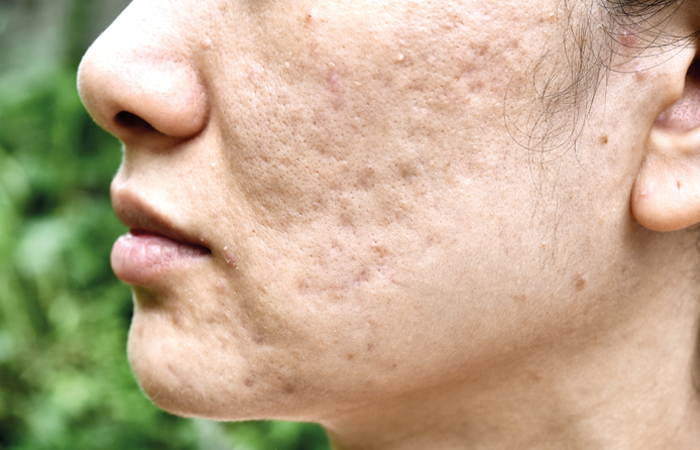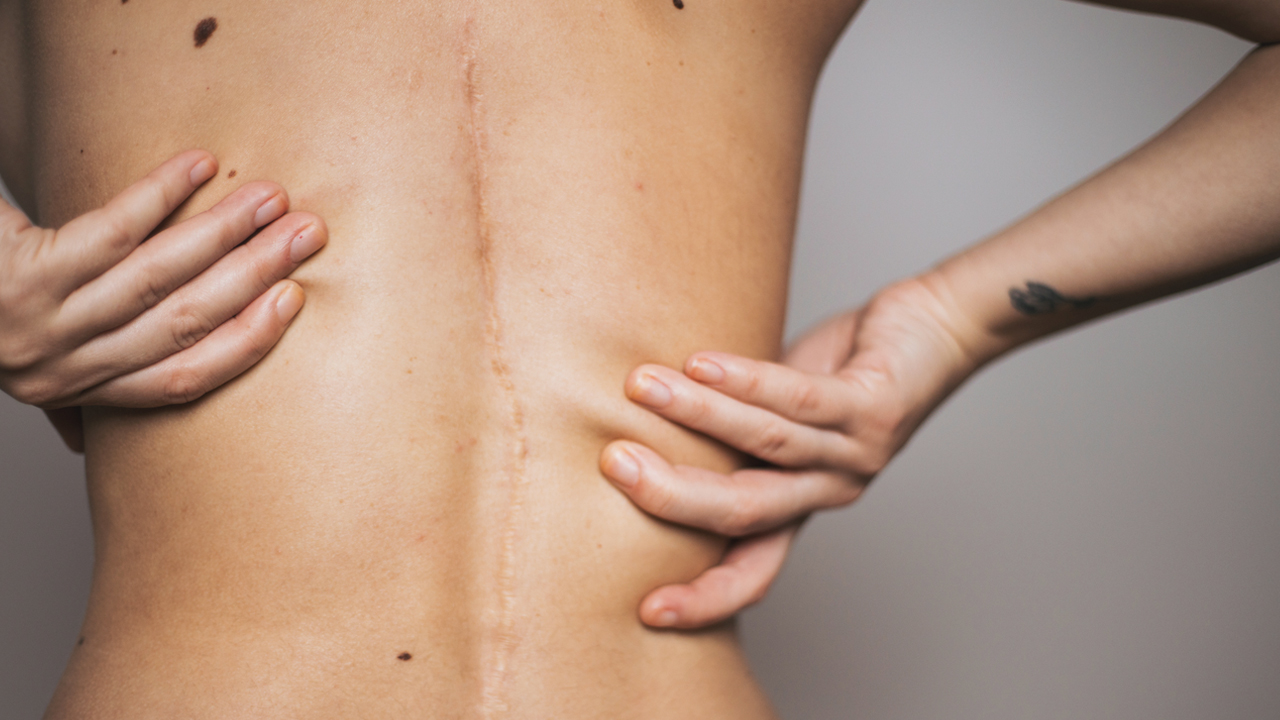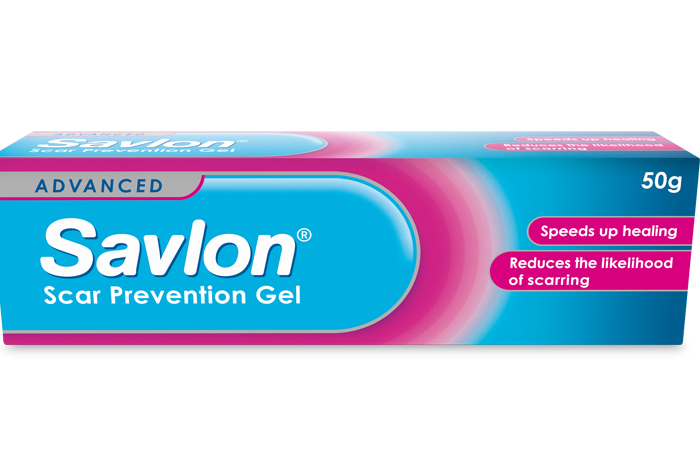In OTC
Bookmark
Record learning outcomes
Scars are a natural part of the wound healing process and many fade over time. But, it can take two or more years for them to become much less noticeable. According to the Scar Free Foundation, scarring affects over 20 million people in the UK. Nearly a quarter of people living with scars of any kind said their scars have caused short-term emotional or physical problems. Yet the charity’s research shows that there’s still a lack of awareness of the impact of living with a scar.
Severe scarring can cause pain, itching and a loss of movement, affecting sleep, mental health and daily activities. Everyone copes with scarring differently. For example, some people with small scars may struggle emotionally more than those with more severe or extensive scarring. According to the Scar Free Foundation, researchers from Swansea University in November 2023, found people with facial scarring resulting from congenital conditions, self-harm, assault or traumatic injuries such as burns are more likely to suffer from anxiety and depression than the wider population.
Scar management aims to improve a scar’s appearance and help to make it less visible. The first-line treatments include wearing prescribed pressure garments and using silicone gel sheets and massage. It’s important for pharmacy teams to understand the impact of scarring and to be able to advise customers about scar management and suitable over-the-counter (OTC) products.
About scarring
When the skin is cut or damaged, it starts to repair itself by growing new tissue close to the wound. A scar is the mark left on the skin once the wound has healed. Scar tissue has a different texture to the surrounding skin. It’s created by excess collagen fibres, which build up at the site of the wound to heal and strengthen it. Blood supply to the wound also increases during the healing process.
Wounds that take a long time to heal, especially if the skin is significantly damaged, are more likely to develop a noticeable scar. Older skin tends to scar less visibly than younger skin. At first, most scars tend to be firm, thick and red in colour, but over time they soften and become paler. This whole process may take 12-18 months or more. Some types of scars become hard, thick and raised instead.
Different types of scars
There are several common types of scars.
- Fine line scars: These are normal after a minor injury or surgery. Fine line scars can be slightly raised at first, but usually flatten and fade over a couple of years without any treatment. The scar may be itchy for the first few months
- Hypertrophic scars: These can occur after any wound, but especially burn injuries or where there’s a lot of tension around a wound. Hypertrophic scars are raised and firm and don’t usually grow any bigger than the original wound
- Keloid scars: These are also raised and firm, but keep growing, even after the wound has healed. They may spread to the surrounding skin. Keloid scars don’t usually flatten or fade without treatment. They can form after minor injuries or if a wound becomes infected. People who have one keloid scar are more likely to develop a keloid scar again after another injury
- Atrophic scars: These pitted or sunken scars often form after acne or chickenpox. These scars are also sometimes called ‘ice pick’ scars and may look like a deep, small hole or sunken mark in the skin
- Contracture scars: These tend to be caused by burns and can affect movement. The skin shrinks and feels tight
- Stretchmarks: These form when the skin is stretched too quickly, such as during pregnancy, periods of rapid growth or after weight gain. Itching may be the first sign. Stretchmarks look red at first and then fade over time.
Market monitor
Savlon Scar Prevention Gel can be used to reduce the likelihood of scarring, speed up healing and help to soothe the pain of minor wounds, grazes and superficial burns, according to STADA UK Thornton & Ross Ltd. The gel creates optimal healing conditions to support the skin’s healing process, the company adds, explaining that it can be used on dry or wet wounds; hydrogel turns dry wounds into wet ones and hydrocolloid absorbs excessive fluid from wet wounds, restoring the water balance.
STADA UK Thornton & Ross Ltd: savlon.co.uk
“Scarring affects over 20 million people in the UK”
Wound care
Small cuts and grazes will usually heal on their own within a week or two, while larger wounds and burns can take much longer to heal.
Cuts and other wounds: The skin will be broken open and may be bleeding. If there is nothing stuck in the wound, stop bleeding by applying pressure with a bandage or a clean, folded cloth for 10 minutes. Then rinse it gently with bottled or tap water or sterile wipes and use soap and water (or a liquid antiseptic) to clean the skin around the wound. Dry the area with a light gauze swab or non-shedding towel, then apply a sterile plaster or dressing. If there’s an object in the wound, don’t try to remove it or press against it; instead, press firmly on either side of the object to push the edges of the wound together, and seek medical advice.
Grazes: Are surface wounds that don’t usually break the skin. Clean the graze carefully with water or a sterile wipe, making sure any grit or dirt is removed. A graze may not need to be covered, unless it is extensive or on a part of the body that is used regularly, such as the palm of the hand.
Burns: Acid and chemical burns need specific medical treatment in A&E, so call an ambulance. While waiting for an ambulance, use running water to remove all traces of the acid or chemical – wear gloves to do this. With heat burns, remove the source (e.g. flame, electricity) and remove any clothing or jewellery near the burnt area of skin (unless it is stuck to the burnt skin). Cool the burn with cool or lukewarm running water for 20 minutes as soon as possible – don’t use any ice, iced water, creams or greasy substances such as butter. Keep the patient warm using blankets or layers of clothing (but don’t put these over the burnt area of skin). Cover the burn with cling film (or a clear plastic bag over the hand). Treat pain with paracetamol or ibuprofen and raise the affected area to reduce swelling.
Insect bites and stings: Carefully remove anything left in the skin (such as a stinger). To do this, brush or scrape it sideways with a fingernail or edge of a bank card. Don’t use tweezers as this could release more poison. Wash the area with soap and water. If the skin is swollen, use an icepack wrapped in a cloth or a cloth soaked in cold water for at least 20 minutes. Keep the area raised and take painkillers to relieve any pain. Recommend antihistamines to relieve any itching and suggest a hydrocortisone cream to reduce itching and swelling.
It’s important to seek medical advice if:
- A wound is very large, deep or dirty
- There’s a foreign object in the wound
- The bleeding won’t stop or comes out in spurts, is bright red or hard to control
- There’s a significant wound on the face or palm of the hand
- A burn is bigger than a 50p piece or the patient is showing any signs of clinical shock (e.g. pale, cold or clammy skin, sweating, breathing problems, and feeling or being sick).
Treatment options
Pressure garments: May be prescribed for people with severe burns to reduce the risk of hypertrophic scarring. These tight, lycra-containing garments limit the growth of scar tissue by providing constant pressure over the wound area. This helps to keep collagen fibres that are building up over the scar as flat as possible. The garments are worn day and night, and only removed to treat the scar with massage or silicone. They are worn until the scar has matured, which could take up to two years.
Massage: Massaging a moisturising cream, oil or lotion into a scar once or twice a day will help to keep it hydrated and soften the scar tissue. Customers may need to do this for at least three months before they notice any significant benefit. Scars should only be massaged once the wound is fully healed. Daily massage may also help to prevent stretchmarks during pregnancy. “Although there is no strict medical evidence of effectiveness, vitamin E cream is often recommended for managing scars,” says Kenny. “The act of massaging it into a scar can help the skin remain supple and ease tension. In some cases, steroid creams can be used to help improve the appearance; however, their use is limited and not always appropriate.”

Although there isn’t reliable evidence for it, some creams claim to help prevent stretchmarks during pregnancy.
Silicone: Products shouldn’t be used on open wounds but may help to reduce or prevent hypertrophic and keloid scarring when used for several months. How silicone works isn’t clear, but it may help to keep the skin hydrated. Many silicone-based gels and gel sheets can be bought from pharmacies without a prescription. Silicone gels are rubbed on the skin, while silicone gel sheets (soft and flexible wound dressings) need to be applied to the skin for several hours at a time. The silicone sheets must be removed every day so the scar can be washed – most products can be washed and reused. “While the skin is healing, silicone gels and sheets can be used to help soften the wound, while easing the itching often associated with the healing process,” explains Kenny. “These need to be placed over the scar for 12 hours a day for at least three months.”
Suncare advice: Scars may become darker, bigger and harder if they are exposed to the sun, and they may also be prone to sunburn. “Scars can be more sensitive to sun exposure,” says Kenny. “So it is important to protect scar tissue from any extra damage, and tanning of the skin can increase the visibility of scars.” Scars should be kept covered with a dressing or clothing in the sun for at least one year after it’s formed, and sunscreen used with a sun protection factor (SPF) of 30 or more.

To prevent scars from worsening, a strong SPF should be applied if outdoors.
Camouflage products: If scars are particularly noticeable, some people use special creams and powders to camouflage them. Camouflage products are waterproof, suitable for the face or body, and can stay in place for two or three days. “These products can be especially useful for customers with facial scarring,” adds Kenny. “In some circumstances, customers may be able to get a prescription for these make-up products, and community pharmacists are well-placed to help advise on the process and refer to a GP.”
“Preventing acne scars goes hand in hand with the management of acne itself”
Acne scars
Some people’s acne clears up without leaving any marks, but other people can experience significant scarring. Acne scars are more likely to form if inflamed spots or cysts burst or if people are picking or squeezing their spots. The scars may look like small deep holes in the skin, uneven bumps or small craters. The best way to prevent scarring is to treat the acne as soon as possible with either over-the-counter (OTC) products or prescribed medicines. “Preventing acne scars goes hand-in-hand with the management of acne itself,” says Kenny Chan, Numark lead information services pharmacist. “Community pharmacies can help customers by providing advice on skincare regimes. They can advise on products that can be purchased over the counter, including benzoyl peroxide products, which work as an antiseptic to reduce bacteria on the surface of skin.”
If scars develop, using a moisturising oil or cream may help to reduce their appearance. Some people may develop severe, raised hypertrophic or keloid scars, especially on their chest, back and shoulders and if they have black or brown skin. If anyone is worried about their acne scars, they should be referred to their GP. Dermabrasion and laser treatments may help to treat acne scars, and make-up (included prescribed camouflage make-up) may help to cover up the scars.

Dermabrasion and laser treatments may help to treat acne scars.


